本网站使用 Cookie,以便为您提供最佳的用户体验。Cookie 信息存储在您的浏览器中,其功能包括在您再次访问我们的网站时识别您的身份,以及帮助我们的团队了解您对网站的哪些部分最感兴趣和最有用。
Vinitaly:值得关注的 8½ 种意大利葡萄酒趋势
随着第 56 届维罗纳国际葡萄酒及烈酒展览会(Vinitaly)的落幕,路易-托马斯(Louis Thomas)对维罗纳最引人入胜的葡萄酒趋势进行了深入探讨。
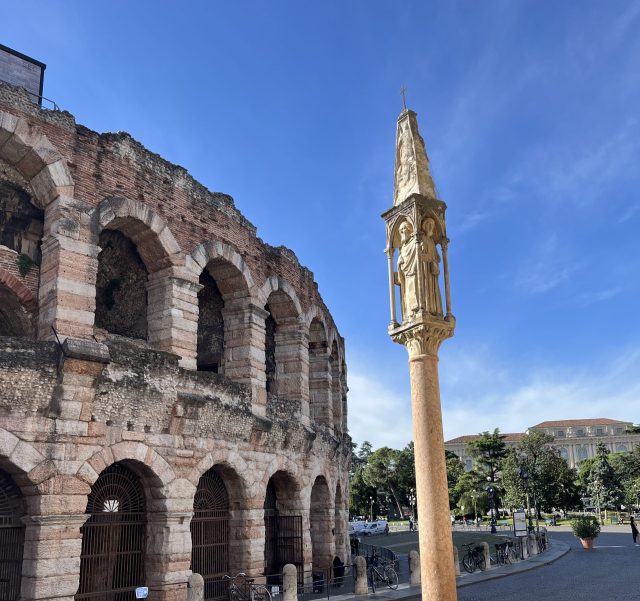
正如哈里-莱姆在《第三个人》中所说:"在意大利,博尔吉亚统治下的30年里,他们经历了战争、恐怖、谋杀和流血,但却产生了米开朗基罗、达-芬奇和文艺复兴。在瑞士,他们有兄弟之爱--他们有 500 年的民主与和平,那产生了什么?布谷鸟钟"。
自去年的 Vinitaly 以来,意大利葡萄酒行业的日子肯定不好过:气候越来越不稳定,加上人们对葡萄酒在年轻一代餐桌上的地位的担忧,给意大利葡萄酒这一有着千年历史的伟大传统的守护者们带来了生存问题。
然而,正如展会上人头攒动的热闹场面所证明的那样,我们有足够的理由对该行业的未来持乐观态度。事实上,正如不利的环境造就了伟大的艺术作品,每年吸引着数百万游客前往佛罗伦萨、罗马和威尼斯一样,意大利葡萄酒最近面临的挑战也为该行业注入了新的活力。
实际上有
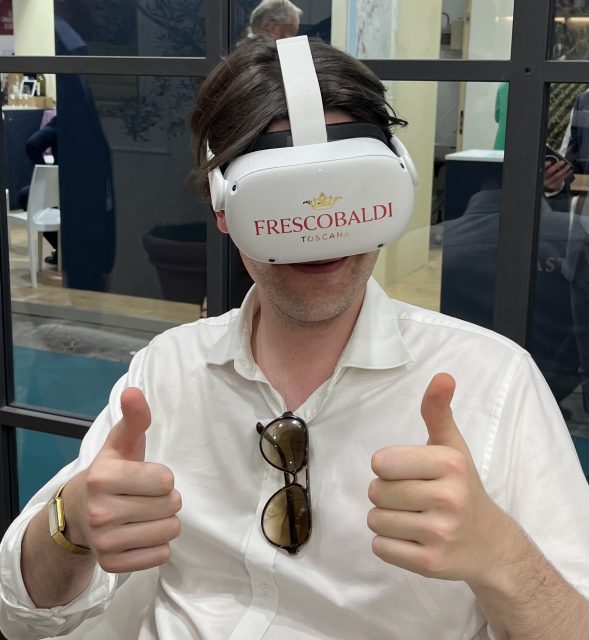
虽然虚拟现实技术,如苹果公司的 Vision Pro 和 Meta Quest,在日常生活中仍未得到广泛应用,但葡萄酒行业的一些人认为,如果将其应用于旅游业,将大有裨益。
其中包括博尔盖里的 Campo alla Sughera 酒庄。酒庄负责人托马索-阿莱桑德里(Tommaso Alessandri)解释说,360 度视频的目的是在葡萄园和酒庄营造 "身临其境 "的感觉,尤其是在采摘或分拣等不允许游客进入的时段。
"他在解释 VR 如何解决无法接待更多游客的问题时说:"我们在博尔盖里还没有纳帕谷的基础设施。
托斯卡纳葡萄酒巨头 Frescobaldi 也在自己的展台上使用了这一设备,尽管该公司在该地区拥有众多庄园,但也同样面临游客参观空间有限的问题。
可以说,从教育的角度来看,VR 的优势在于让人们(无论是 WSET 的学生还是爱好者)无需亲临现场,就能清楚地看到酒庄是如何运作的--酒庄的问题在于它们往往不在人迹罕至的地方。当有人注意到在一些视频中可以看到他的身影时,Alessandri 开起了玩笑:"我们不付钱给演员!"
当然,头戴式耳机并不能完全取代真正的参观,但在 Vinitaly 等展会上看到越来越多的生产商使用头戴式耳机虚拟带领参观者参观他们的葡萄园和酿酒厂也不足为奇。主要的问题是,在贸易展览的环境中,会增加碰倒酒杯的危险。
La Place 是个好地方
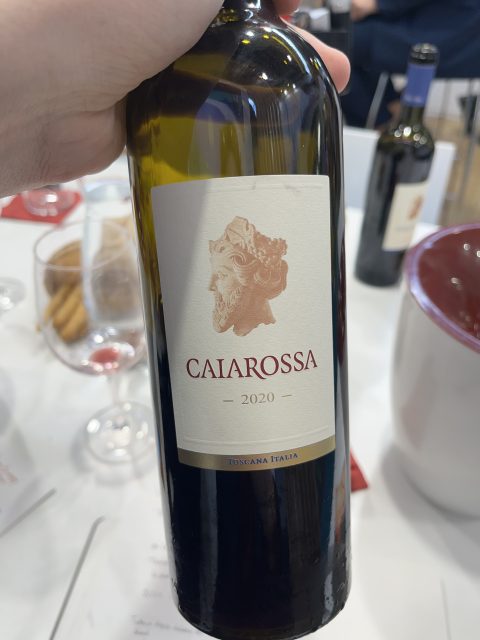
波尔多广场正在成为一个真正的国际盛会,加利福尼亚人、智利人,当然还有意大利人,都获得了梦寐以求的位置,而且看起来对这些葡萄酒的兴趣不会很快消退。
Caiarossa酒庄于2017年推出了2013年份的同名旗舰酒,在托斯卡纳海岸的里帕贝拉(Riparbella),通过将赤霞珠(Cabernet Sauvignon)和小维铎(Petit Verdot)等波尔多葡萄品种与歌海娜(Grenache)和西拉(Syrah)等罗讷葡萄品种相结合,在其40公顷的生物动力栽培葡萄园中,Caiarossa酒庄一举成名。酒庄与波尔多的渊源来自于其创始人、已故的埃里克-阿尔巴达-耶尔格斯马(Eric Albada Jelgersma)也曾拥有位于玛歌(Margaux)的吉斯库斯酒庄(Château Giscours)。
"葡萄园经理弗朗切斯科-比利亚(Francesco Villa)说:"进入 La Place 对酒庄产生了巨大影响。"我们与波尔多的酒庄建立了联系,他们知道酒庄是如何运作的。它彻底改变了我们销售葡萄酒的方式--它帮助我们在世界各地(从非洲到新西兰)拥有更多的知名度。
不过,虽然他注意到 "很多酒庄 "都会给 Caiarossa 打去电话,"询问代理商制度是如何运作的",但 Villa 并不确定这是否是最好的办法:"我不知道太多的国际葡萄酒是否真的对它有好处"。
但是,鉴于波尔多广场的声望,意大利的入侵似乎没有减缓的迹象。
越来越低
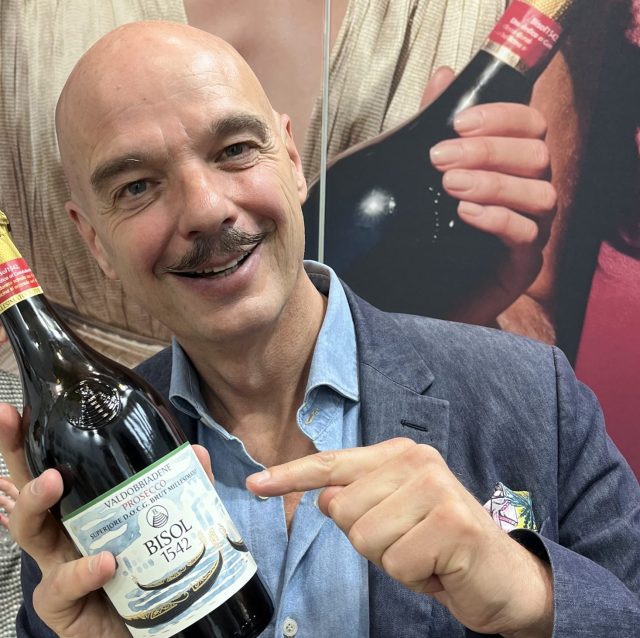
在葡萄酒贸易中,生产商努力降低酒精度的做法似乎越来越普遍--无论是为了吸引更多 "注重健康 "的消费者,还是为了规避英国新的葡萄酒税制,即根据酒精度对葡萄酒征税。
然而,对于鲁内利集团(Gruppo Lunelli)旗下著名的普罗塞克酒生产商比索 1542 来说,其新产品酒精度为 10.5% 的 I Gondolieri Prosecco Superiore di Valdobbiadene 2023 背后的动机却与此大相径庭。
"达到10.5%并不是我们的首要目标,"总裁吉安卢卡-比索尔(Gianluca Bisol)透露道。"我们的第一个目标是生产不加糖的普罗塞克酒。
这款酒被列为 Brut 级,是 DOCG 酒精度的下限。尽管 Bisol 1542 的酒精度为 11 克/升,相对较干,但它追求 "葡萄中最大的糖分 "和 "酸度"。
其中一个因素是土壤中含有 Cartizze(砂岩和冰碛)成分。"Bisol解释说:"在Cartizze土壤上生长的葡萄,可以在10-12天后采摘,而不会失去酸度。"Cartizze对于格拉(Glera)的意义就如同蒙哈榭对于霞多丽(Chardonnay)的意义一样。
目前,根据Bisol 1542的说法,I Gondolieri是该产区酒精度最低的布鲁特酒,但其他普罗塞克酒商可能很快就会效仿。Bisol 指出,"人们追求更健康的葡萄酒",鉴于 1 克酒精约等于 7 千卡热量,在不影响口味的前提下降低酒精度很可能是消费者所追求的。
减少亚硫酸盐
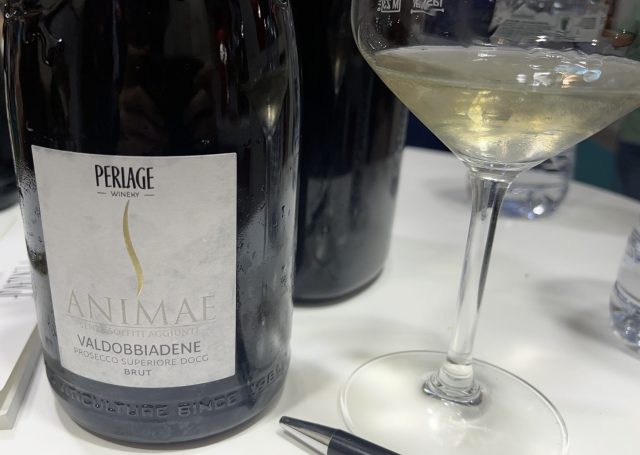
与降低普罗塞克酒的酒精含量类似,至少有一家生产商在葡萄酒的另一个方面也在突破界限。
除了发酵过程中产生的亚硫酸盐外,添加亚硫酸盐在防止葡萄酒变质方面也起着至关重要的作用,但据估计,大约每 100 人中就有一人对亚硫酸盐过敏。
"有些人不想要亚硫酸盐,因为他们不能有亚硫酸盐,"Perlage 公司的 Anna Nardi 解释说,"有些人则像我一样,想要同一种葡萄的不同表现形式。
Perlage Animae 是首款使用新型酵母菌株酿造的有机普罗塞克超级干红葡萄酒,这种酵母在发酵过程中不会产生亚硫酸盐。这些酵母还能进行厌氧发酵,从而降低了氧化的风险,并减少了在酿酒过程中添加亚硫酸盐的需要。
从口感上看,它无疑偏向于天然葡萄酒的风味,但果香和清新并没有被农家风味所掩盖。
不过,纳尔迪认为,由于Animae的产量只有8000瓶(Perlage公司整个系列的总产量超过200万瓶),它仍然是一种 "小众 "产品,不一定能吸引普罗塞克酒的常客:"你不能把它放在桌子中间,然后说'我买了普罗塞克'--他们认不出它来!"
正如纳尔迪所指出的那样,这样的葡萄酒对于追求好奇心的爱好者来说更有吸引力,但如果其他普罗塞克生产商也决定在自己的产品组合中加入这种独特风格的起泡酒,那将是一件非常有趣的事情。
条条大路通罗马

据报道,作为仅次于巴黎的欧盟第二大旅游城市,罗马当然不缺游客,去年吸引了创纪录的 3500 万游客,但其中有多少人在假期中走出了 "永恒之城"?
国际知名度是拉齐奥大区及其葡萄酒生产商面临的一个问题。
"如果让 100 个英国人说出一种拉齐奥葡萄酒的名字,90 个英国人会说是弗拉斯卡蒂葡萄酒,"皮奇尼斯科的 I Ciacca 公司负责人路易吉-塔纳(Luigi Tana)说。"我们想推广这个地区、这个山谷和马图拉诺葡萄--品牌是第四件事。
塔娜解释说,I Ciacca 吸引游客的优势之一是,它位于罗马和那不勒斯之间的路线上,既可以作为中转站,也可以作为进一步探索意大利这块土地的基地。
对于那些想参观斗兽场和顺便参观梵蒂冈,但又不一定想全程体验罗马风情的游客来说,这样的酒店也很有优势。
"我们离罗马很近,"十多年前共同创建 L'Avventura 葡萄酒庄的 Steffano Matturro 解释说。"这对那些不想呆在城里的人来说是件好事。
目前,L'Avventura 拥有六间客房、一家餐厅和一个 "葡萄酒度假村"。我们在度假时所做的一切,都会影响我们回家后对葡萄酒的选择。
本地英雄
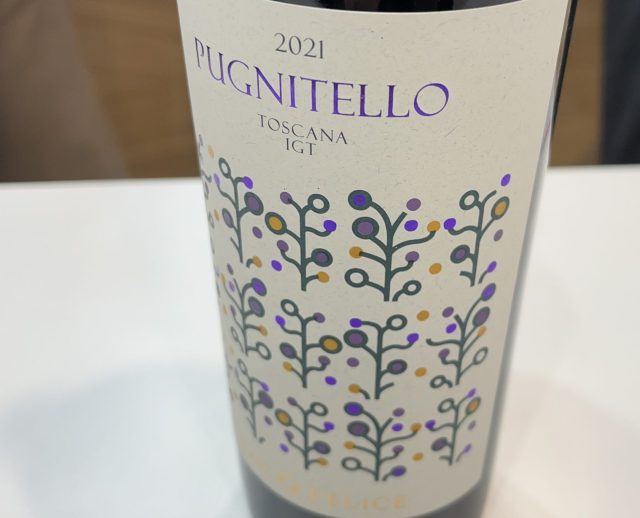
拉齐奥具有浓厚的超本地葡萄品种传统,这在某种程度上是一把双刃剑,因为如何向不熟悉这些品种的消费者解释,更关键的是如何向他们销售用这些品种酿造的葡萄酒,是一项挑战。
这正是意大利的整体问题所在:意大利有 2000 多种本土葡萄,据估计还有更多,这些小众品种需要生产商的支持,就像 I Ciacca 在拉齐奥的 Maturano 所做的那样。
托斯卡纳的圣菲利斯酒庄(San Felice)是一种经常被忽视的葡萄的支持者,该酒庄一直是帕格尼特罗(Pugnitello)的支持者。Pugnitello 的字面意思是 "小拳头",指的是葡萄串的紧实程度,这个名字也暗示了它给葡萄酒带来的特点--浓郁的单宁和酸度。
销售和营销总监弗朗切斯科-达-阿莱西(Francesco Da Alessi)介绍说,这家在托斯卡纳拥有三个庄园(基安蒂-克莱斯蒂科、蒙塔尔奇诺和博尔盖里)的生产商于 2000 年首次种植帕格尼特罗葡萄,六年后推出了其托斯卡纳 IGT 帕格尼特罗葡萄的首个年份。
他说:"现在每种葡萄酒中都有一些帕格尼特罗"--圣菲利斯自1968年起酿制的维哥雷洛就是其中之一。2020 年份的葡萄酒中含有 40% 的帕格尼特罗,其余为赤霞珠、梅洛和少量小维铎。
用德阿莱西的话说,解释这种黑色果味和烟熏味的浆果 "非常困难",但他并没有听不进去:"我们可以看到,美国、瑞士和日本等国都对 [Pugnitello] 颇感兴趣,当然,意大利才是它的主要市场......这取决于我们想在多大程度上宣传它。
本地葡萄也不是一成不变的。在艾米利亚-罗马涅地区种植的白葡萄品种阿尔巴娜(Albana)可以酿造出高品质的干葡萄酒和帕西托葡萄酒,甚至像安福拉的维塔巴阿尔巴娜(Vitalba Albana)一样,可以酿造出陈年橙葡萄酒。因此,无论市场认为下一个流行趋势是什么,意大利的葡萄都能酿造出这种酒。
前景看好的黑皮诺

黑皮诺是一种不难传播的葡萄,无论是用于酿造静止葡萄酒还是传统的起泡葡萄酒--事实上,唯一的挑战可能就是该叫黑皮诺还是 "黑皮诺"。在 Vinitaly 2024 展会上,几款来自该国北部的优质黑皮诺静止葡萄酒亮相。
特伦蒂诺能够出产上乘的黑皮诺,Cantina Viticoltori Trentini (CAVIT) 等公司在这方面处于领先地位,但其他更出人意料的地区也在大力推广这种葡萄。
Bricco de Guazzi、Tenute del Leone Alato 位于蒙费拉托的酒庄利用展会推出了 Funtanin,这是一款皮埃蒙特法定产区黑皮诺葡萄酒,因酒庄附近历史悠久的喷泉而得名。
丰塔宁葡萄酒于 2019 年采摘,并在橡木桶中陈酿了六个月,据发言人称,"虽然还有些年轻,但已经有了复杂性、天鹅绒般的口感和单宁"。考虑到它的皮埃蒙特产地,与之搭配的葡萄酒应该是 "褐葡萄"(vitello tonnato)。
意大利北部的另一个角落也出产值得一提的黑皮诺。
在 Villa Sandi 展台举办的一场座无虚席的活动上,该公司展示了其位于弗留利-威尼斯朱利亚省的 Borgo Conventi 庄园出产的超独家新产品 Euda。
科利奥历来是白葡萄酒的天下,尤其是用弗留拉诺(Friulano)、Ribolla Gialla 和 Malvasia Istriana 酿造的白葡萄酒。
"传奇顾问酿酒师里卡多-科塔雷拉(Riccardo Cotarella)说:"我一直很讨厌人们对葡萄的刻板印象,比如黑皮诺只能在特定的土壤上生长。"从来没有人检验过这些刻板印象的真伪......科利奥的黑皮诺不可能好的真相在哪里?
"科塔雷拉继续说道:"我深信,在那些你认为永远不会有特别收获的地方,一定会给你带来惊喜。"这就像把一辆名车放在车库里却从来不用一样!"
用 "尊贵 "来形容再恰当不过了--九月份仅发售 1200 瓶 Euda(带有莫迪里阿尼艺术品标签),另外 600 瓶将留作未来品鉴之用。
口感方面,建议品尝枸杞、黑胡椒、青椒、肉桂、香草和泥土。丰富的单宁和果敢的口感与人们想象中细腻、清淡的黑比诺相去甚远。从结果来看,如果科利奥有更多的生产商种植该品种,努力酿造高端葡萄酒,也不会让人感到震惊。
交流清晰
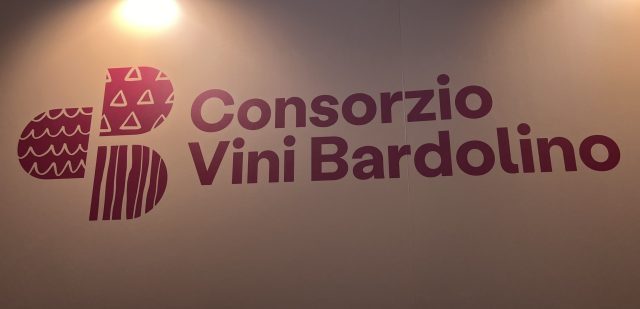
当然,要卖给消费者的不仅仅是葡萄,还有地区。
对于代表加尔达湖东岸的 Chiaretto 和 Bardolino 管理协会来说,在推广品牌时面临着一些挑战。
Consorzio 总裁 Fabio Dei Micheli 指出,该产区每年生产 1,000 万瓶桃红葡萄酒和 1,100 万瓶红葡萄酒,取得了突飞猛进的发展:"年复一年,我们的生产商在不断提高产品质量"。
为了反映这一点以及该地区的气候条件,酒庄在 Vinitaly 发布了新品牌,三个部分分别代表山脉的影响、湖区的地中海气候和大陆性。除了拼出首字母外,其形状还让人联想到该地区许多历史建筑的拱门。在一个图标中,包含了三种气候元素和对过去的致敬。
根据 Dei Micheli 的说法,这一设计得到了博览会参观者的 "积极反馈",表明 "改变形象说起来容易,做起来难"。
"他认为:"我们必须谈论土地和人民--他们酿造了美酒。
当然,商标的作用有限。意大利葡萄酒在英语市场表现出色,但很少有人谈及的一个方面是其名字的发音有多简单--"Gavi "之所以能脱销是有原因的。Dei Micheli 开玩笑说,"Chiaretto "可以读作 "She-a-retto,就像霞多丽!"
回到未来?
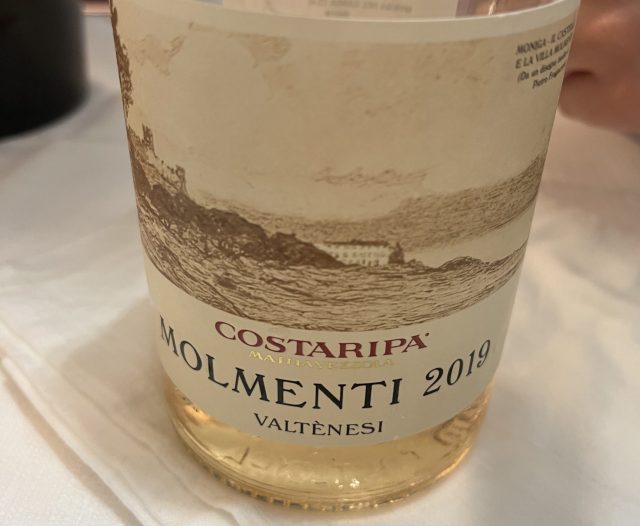
不过,意大利葡萄酒业要想保持自己的地位,也许不需要做任何新的事情,也许它最大的优势就是对传统的坚持。
加尔达湖西岸的 Valtenesi 自 19 世纪末起就开始酿造桃红葡萄酒,而 Costaripa 就是这一传统的守护者之一。
Nicole Vezzola 是科斯塔里帕家族的下一代掌门人,她认为粉红葡萄酒对于 Valtenesi 就像红葡萄酒对于巴罗洛一样不可或缺。就 Costaripa 而言,酿造 Rosa Mara 的葡萄品种有 Groppello、Marzemino、Sangiovese 和 Barbera。
莫尔门蒂也采用了同样的葡萄品种,但罗莎-玛拉(Rosa Mara)和许多桃红葡萄酒一样,适合较早饮用,而莫尔门蒂(Molmenti)则完全不同。
"Vezzola在品尝Vinitaly展上亮相的2019年份莫尔门蒂葡萄酒时解释道:"葡萄酒行业最重要的变量是时间。三年的酒窖陈酿和其余时间的瓶中陈酿赋予了这款酒巨大的复杂性,Vezzola 指着其中的枣子、杏仁和甘草根的味道说道。
"我们为什么要用每年每公顷投入 380 个小时的完全健康的红葡萄来酿造一种只能持续一年的葡萄酒呢?唯一的障碍就是颜色。
莫尔门蒂的名字来源于威尼斯参议员庞培-杰拉多-莫尔门蒂(Pompeo Gherardo Molmenti),他是瓦尔泰内西桃红葡萄酒生产的开创者,自 1992 年以来一直由科斯塔里帕公司生产。
停摆的钟表一天有两次是对的,如果市场愿意,古老的传统很容易再次成为消费者的心头好。莫尔门蒂(Molmenti)等葡萄酒并不特别新颖,但它们在意大利葡萄酒的持续发展中仍扮演着重要角色。

